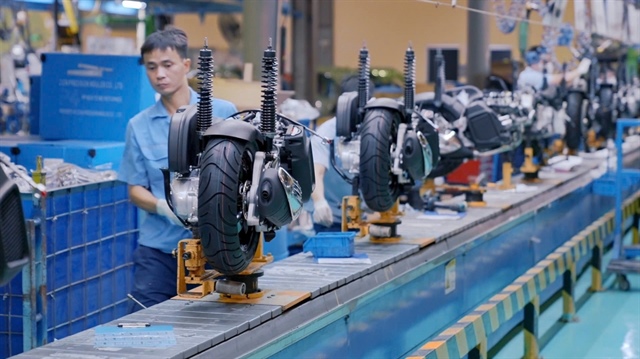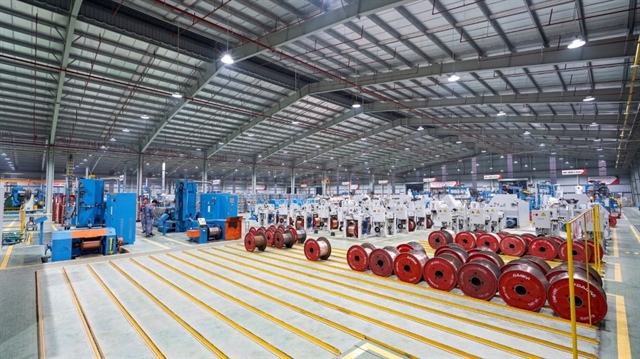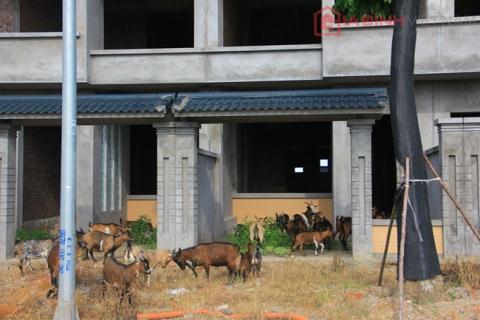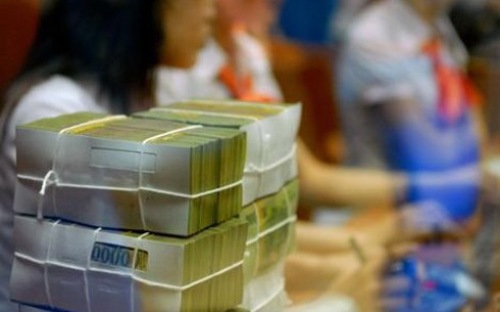Modern trade centers push buyers away, Vietnam traders say
Modern trade centers push buyers away, Vietnam traders say
The planned trade centers that are set to replace traditional markets in many big cities in Vietnam may well share the fate of modern shopping venues in Hanoi, where traders say the new facilities have driven away their customers.
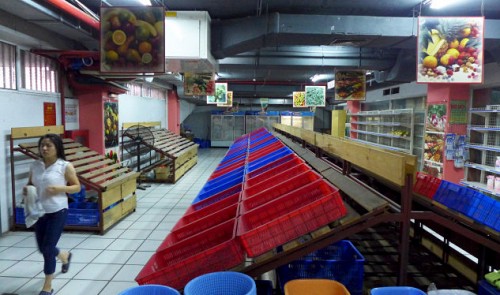
The Hanoi Department of Industry and Trade has recently inspected five market-trade center complexes, which have replaced old, traditional markets, in the capital city, and found traders there suffering from slack business.
A market-trade center complex is a multistory building, where the market is usually located in the basement or on the first and second floors, while the remaining stories are dedicated to modern stores or offices for lease.
With most of the traditional markets relocated to the basements of the complexes, buyers have to park their motorbikes and make their way downstairs just to be able to shop.
This is very inconvenient compared to the old markets, where market-goers could simply drop by for their purchases without parking their vehicles.
“Most of the market-goers are middle-aged or elderly, who do not want to climb dozens of steps down to the basement, and then climb back up,” Oanh Son, who sells food at the Hang Da market-trade center complex, said.
Son added that her sales at the new venue are only 10-20 percent compared to the old market.
The Hang Da market-trade center complex was constructed at a cost of VND236 billion (US$11.11 million) with five aboveground floors and two basements. Traders from the traditional markets have been relocated to the first basement and the first floor of the building.
But only 313 out of 371 booths in the basement remain open, while 62 out of 173 stores on the ground floor have shut their doors.
Parking is also an issue at the Cua Nam market in Hoan Kiem District. The market is situated in the basement of a seven-story office building, and shares the parking lot in the second basement with the businesses leasing offices at the complex.
But the parking lot is closed during weekends, when employees of the firms do not work. Shoppers thus have to find nearby places to park before going to the market.
Many small traders at the Cua Nam market have transferred their booths and moved to other markets, as buyers are hard to find.
“I received no customers after spending the whole day in that basement, so I decided to quit,” Nguyen Thi Vinh, who used to sell green produce at Cua Nam, said.
The O Cho Dua complex in Dong Da District, meanwhile, has the worst fate, as traders did not want to come to the facility.
Trader protests
O Cho Dua used to be a busy market capable of serving all the needs of local residents seven years ago, before it was converted into a seven-story modern market-trade center complex.
Small traders were relocated to the first and second floors of the VND14 billion ($658,948) building, but they all ceased business eventually.
The Hanoi administration has thus dropped plans to convert three other traditional markets into market-trade center complexes, according to the municipal Department of Industry and Trade.
The decision followed “various reasons” and “feedback from small traders,” the department said.
Many other markets in big cities across Vietnam have also been mooted for demolition under projects to revamp urban areas.
The administration of Tan Binh District in Ho Chi Minh City has decided to replace the half-century-old Tan Binh market with a six-story market, a plan that will affect 2,956 traders. A 17-story shopping center will be built in front of the new market as well, according to the district’s proposal.
The central coastal city of Da Nang also plans to demolish the iconic Han and Con markets, and replace them with modern, multi-story trade centers.
All of the traders at these markets protest the plans, saying they will lose frequent customers and partners once relocated to the new venues.
tuoitrenews


